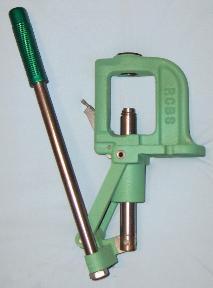| $0.039 | Primer Cost | ($38.99 per box of 1,000 primers divided by 1,000) |
| $0.049 | Average Powder Cost | ($18.49 per pound divided by 378 Shells per pound) |
| $0.290 | Average Shot Shell Cost | ($50.99 per 11-pound bag divided by 176 Shells per bag) |
| $0.032 | Average Wad Cost | ($7.89 per bag of 250 Wads divided by 250) |
| $0.410 | Total Cost to Reload one Used 12 Gauge Shotgun Shell | (0.410 = 0.039 + 0.049 + 0.290 + 0.032) |
| $0.240 | Average Cost of one New Factory-Loaded 12 Gauge Shotgun Shell | ($23.97 per case of 100 shells divided by 100 shells per case) |
| $0.039 | Primer Cost | ($38.99 per box of 1,000 primers divided by 1,000) |
| $0.107 | Average Powder Cost | ($18.79 per pound divided by 175 Shells per pound) |
| $0.560 | Average One-Ounce Slug Cost | ($13.99 per 25 Slugs divided by 25) |
| $0.032 | Average Wad Cost | ($7.89 per bag of 250 Wads divided by 250) |
| $0.738 | Total Cost to Reload one Used 12 Gauge Shotgun Slug | (0.738 = 0.039 + 0.107 + 0.560 + 0.032) |
| $0.631 | Average Cost of one New Factory-Loaded 12 Gauge Shotgun Slug | ($9.47 per box of 15 slugs divided by 15 slugs per box) |


































 Pistol Ammunition Summary:
Pistol Ammunition Summary:
